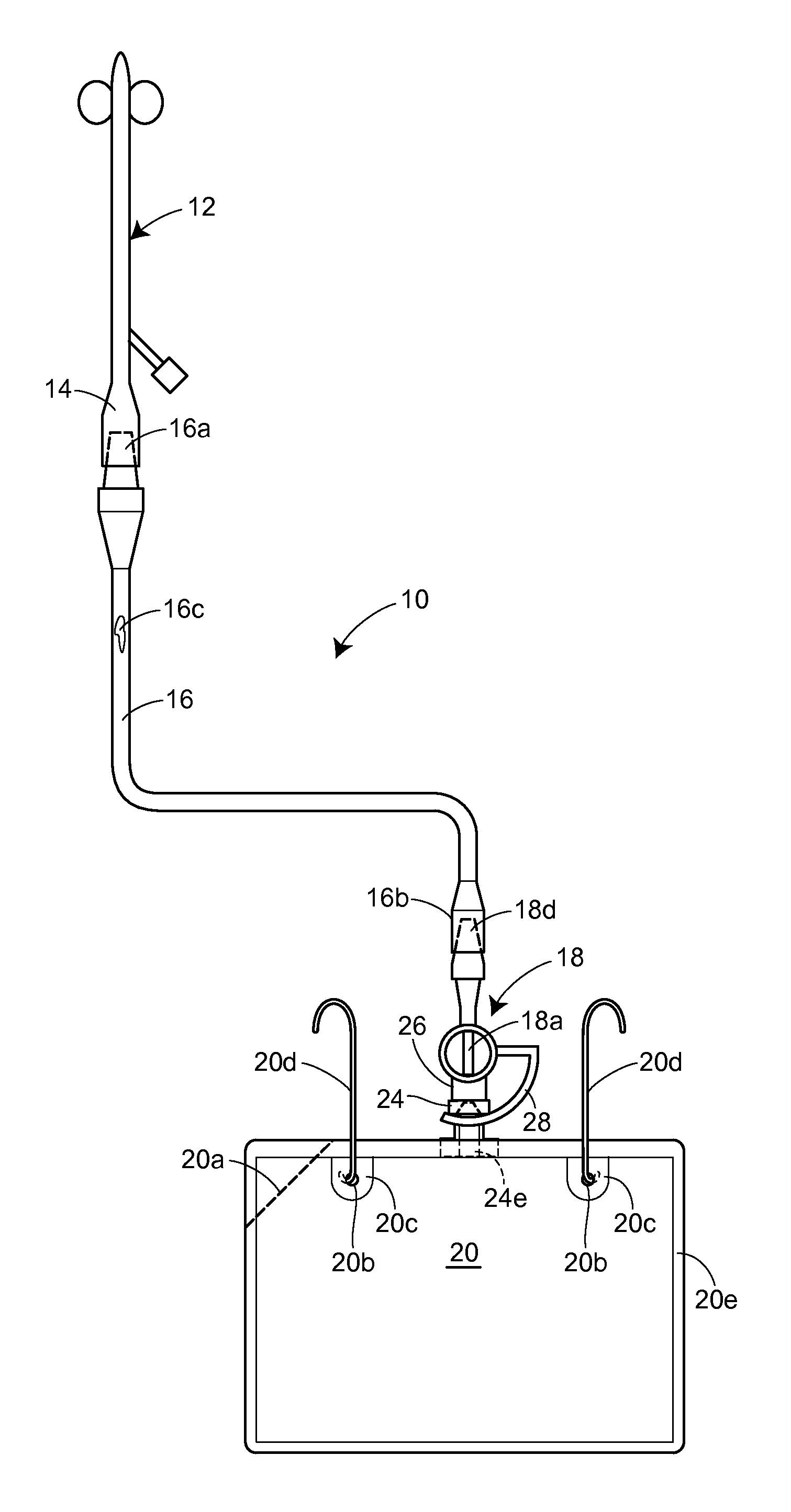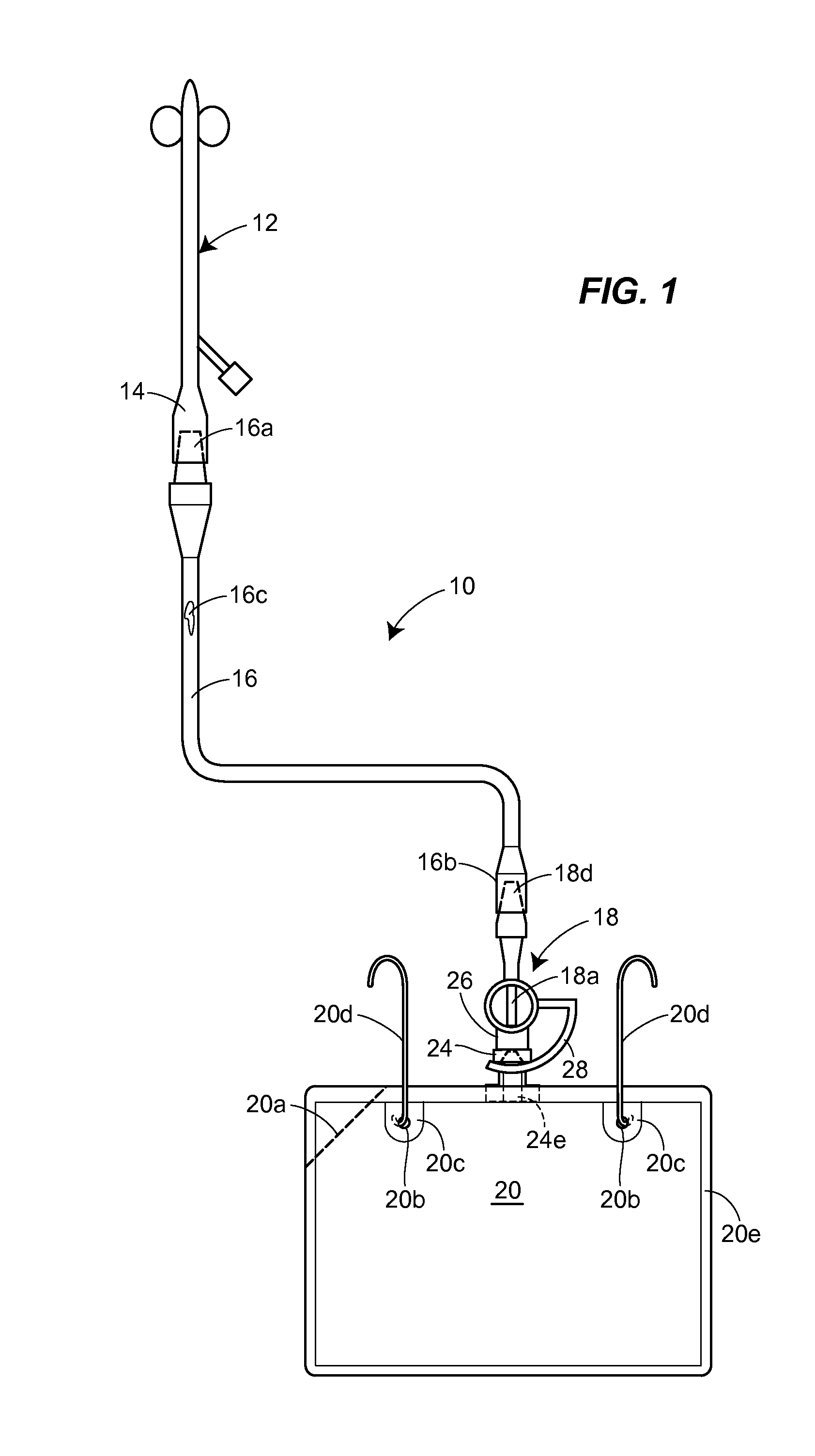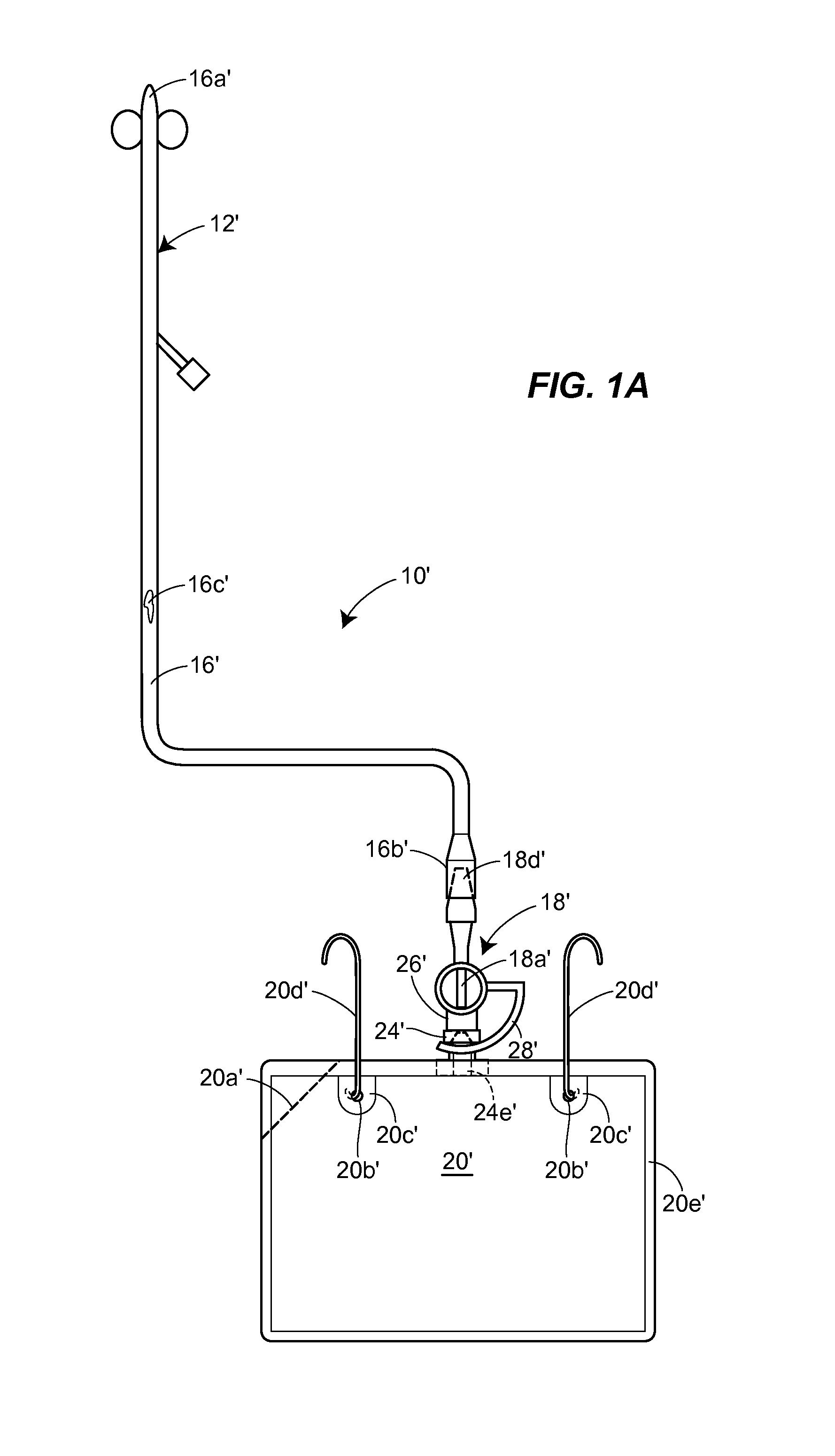Foley Catheter Collection System
a collection system and catheter technology, applied in catheters, non-surgical orthopedic devices, medical science, etc., can solve the problems of bacterial contamination, high healthcare burden, and high prevalence of foley catheters, and achieve the effects of ensuring the sterility of the drainage system lumen, convenient use, and convenient us
- Summary
- Abstract
- Description
- Claims
- Application Information
AI Technical Summary
Benefits of technology
Problems solved by technology
Method used
Image
Examples
Embodiment Construction
[0032]In the illustrations given, and with reference first to FIG. 1, the reference numeral 10 designates generally a Foley catheter collection system in accordance with the present disclosure. The collection system 10 illustrated in FIG. 1 includes a tubing element 16 having a first end 16a for permanent connection to a drain hub 14 of the conventional Foley catheter 12 illustrated in FIG. 1. Further, the tubing element 16 has a second end 16b remote from the first end 16a, and the second end 16b has a drainage valve 18 movable from an open catheter drainage position to a closed position for preventing the flow of urine from the catheter.
[0033]In an alternative embodiment illustrated in FIG. 1A, the tubing element 16′ of the Foley catheter collection system 10′ comprises the catheter tube of a specially configured Foley catheter 12′. It will be seen from FIG. 1A that the first end 16a′ of the tubing element 16′ comprises the insertion end of the specially configured Foley catheter ...
PUM
 Login to View More
Login to View More Abstract
Description
Claims
Application Information
 Login to View More
Login to View More - R&D
- Intellectual Property
- Life Sciences
- Materials
- Tech Scout
- Unparalleled Data Quality
- Higher Quality Content
- 60% Fewer Hallucinations
Browse by: Latest US Patents, China's latest patents, Technical Efficacy Thesaurus, Application Domain, Technology Topic, Popular Technical Reports.
© 2025 PatSnap. All rights reserved.Legal|Privacy policy|Modern Slavery Act Transparency Statement|Sitemap|About US| Contact US: help@patsnap.com



